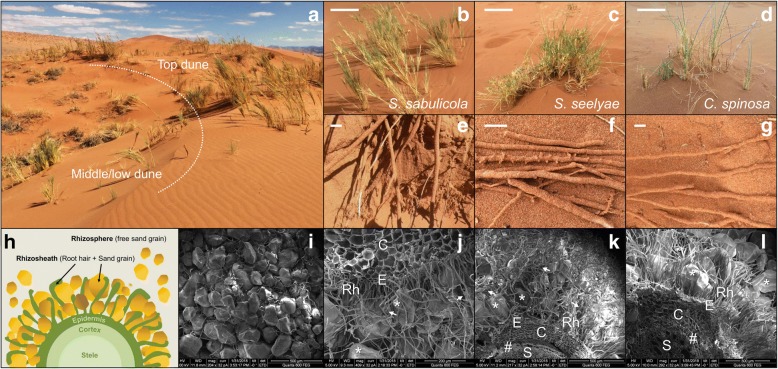Fig. 1.
Habitat niches and rhizosheath-root systems of Namib Desert dune speargrasses. a Photograph of the sand dune selected for the sampling. Speargrasses’ habitat niches along dune slope were indicated (top vs middle/low dune; [26]). b–d Photographs of the three speargrasses (b S. sabulicola; c S. seelyae and d C. spinosa; bars correspond to 50 cm) and their respective rhizosheath-root system (e–g bars correspond to 1 cm). h Schematic representation of rhizosheath-root system structure. Root tissues composed by inner stele, followed by cortex and epidermal layers; rhizosheath composed by sand grains physically attached to the epidermal layer by the trapping effect of root hairs; rhizosphere referred to the sand grain influenced by root but not physically associated to the root system (sensu [12]). i SEM images of rhizosheath-root external layer showing rhizosheath matrix of root hairs entrapping sand grains. j–l Cross section SEM images revealing the structure of the speargrasses rhizosheath-root system (j S. sabulicola; k S. seelyae and l C. spinosa). S, stele: the central core of root of vascular plants; E, epidermis: the outermost cells of the root; C, cortical tissue: the tissue between the epidermis and the stele in root; Rh, root hairs: projection from the epidermis cells; *: sand grain surface; white arrow: mucilaginous, extra polysaccharide, fungal hyphae. #, endodermis: layer of cells between stele and cortical tissues. Note the different scales on the SEM photographs

